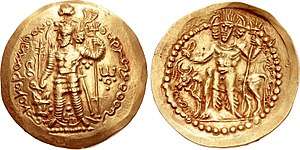Hormizd I Kushanshah

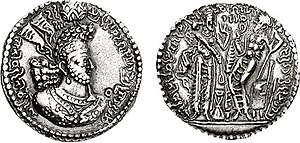
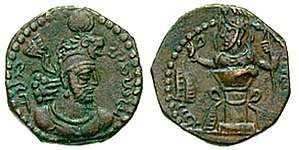
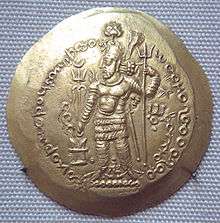
Hormizd I Kushanshah (277-286 CE), also Ohrmazd I, was a Kushano-Sasanids Kushanshas ruler, in effect a goveror of the Sassanid Empire for the eastern regions of Sogdiana, Bactria and Gandhara which had been captured following the fall of the Kushans in 225 CE.[3] His coins were minted at Kabul, Balkh, Herat, and Merv.[4]
He was probably a son of Sasanian king Bahram I and brother of Bahram II.[4]
He issued coins with the title Kushanshahanshah ("King of kings of the Kushans")[5], probably in defiance of imperial Sasanian rule.[3] Some of his coins imitate Kushan coinage, with king standing in Kushan military dress on the obverse, and deity Oēšo (Shiva) on the reverse.[4] Other coins however follow more closely the Sasanian pattern, with a king being portrayed in the Sasanian style, and with fire altar or deity on the reverse.[4]
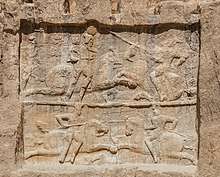
Hormizd I Kushanshah seems to have led a rebellion against contemporary emperor Bahram II (276-293 CE) of the Sasanian Empire, but failed.[3] According to the Panegyrici Latini (3rd-4th century CE), there was a rebellion of a certain Ormis (Ormisdas) against his brother Bahram II, and Ormis was supported by the people of Saccis (Sakastan).[4] Hormizd of Sakastan may or may not be identical with him.
References
| Preceded by Peroz I Kushanshah |
Kushanshah of the Kushano-Sasanian Kingdom 277-286 |
Succeeded by Hormizd II Kushanshah |
